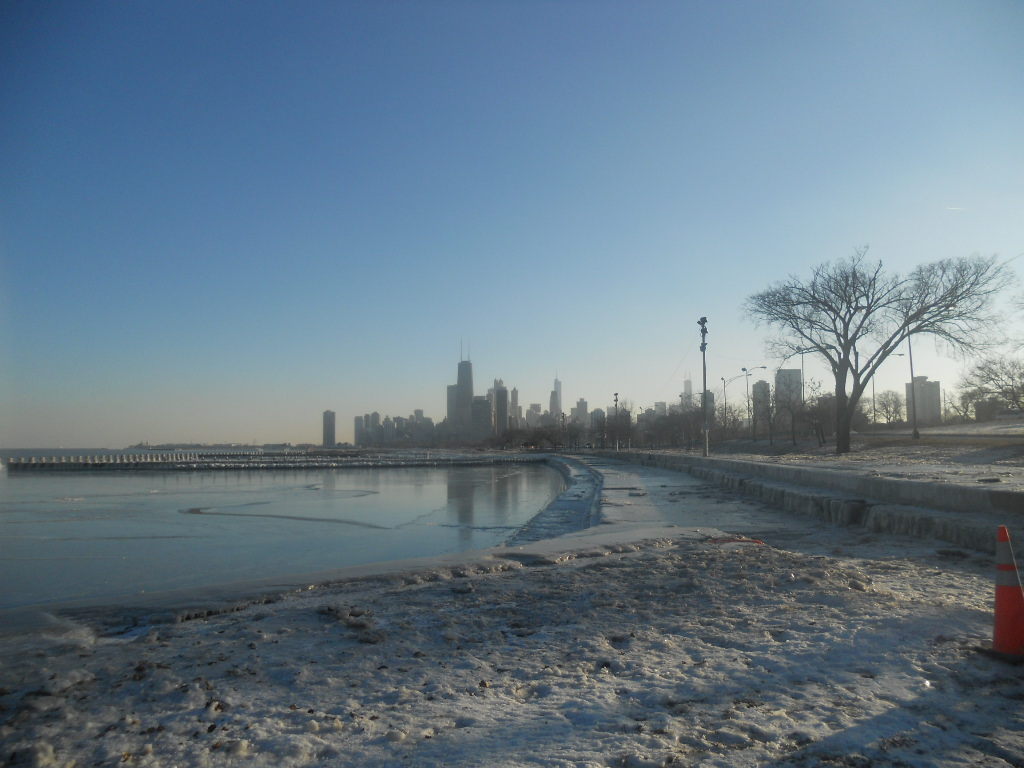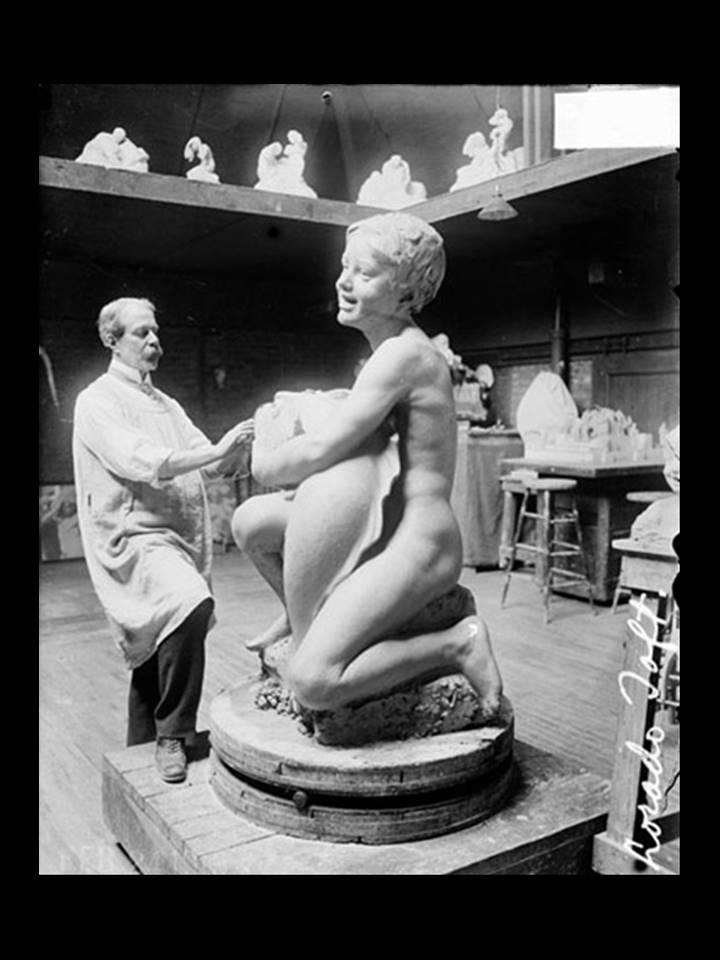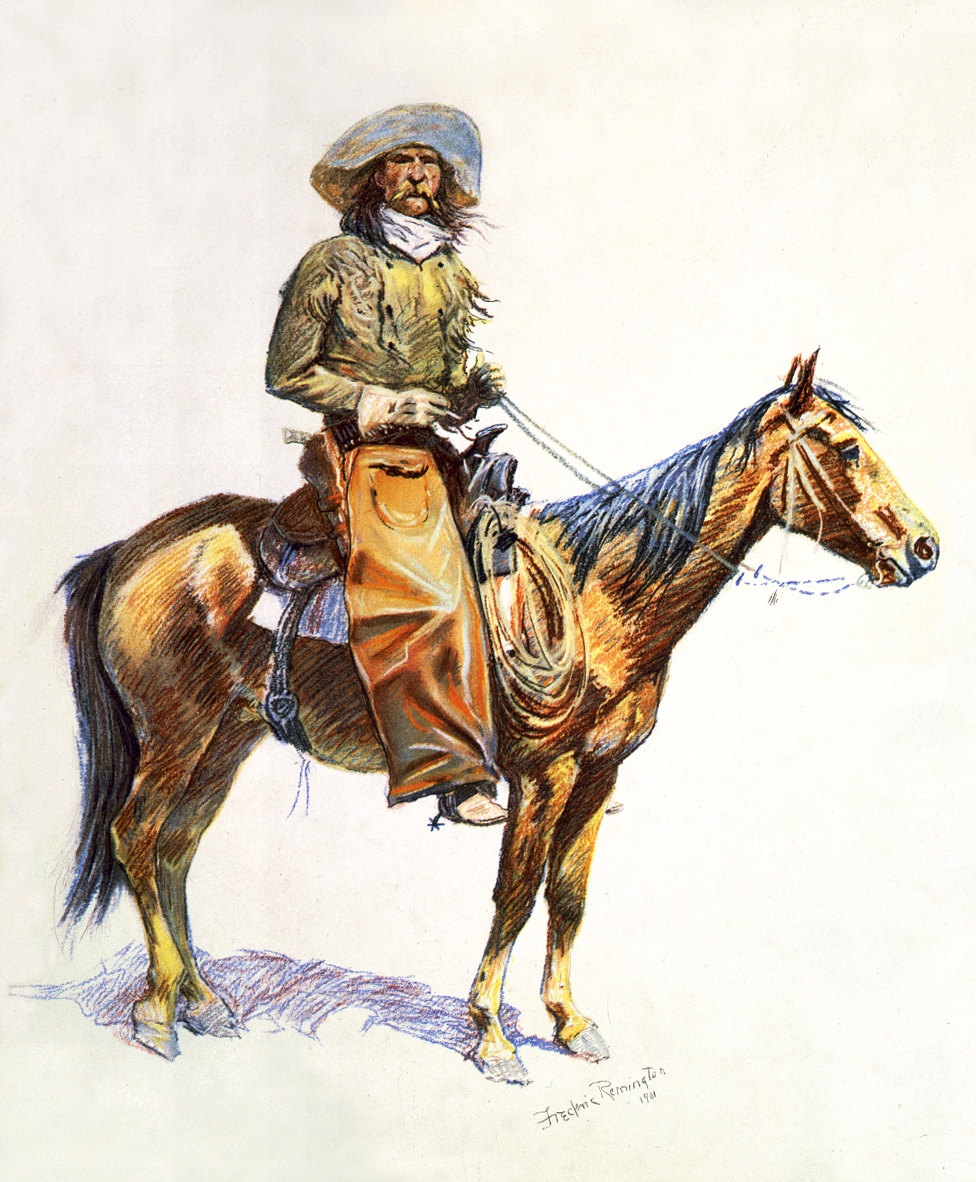|
The Medicine Man (Dallin)
''The Medicine Man'' is an 1899 bronze equestrian statue by Cyrus Edwin Dallin located on Dauphin Street, west of 33rd Street, in Fairmount Park in Philadelphia. The statue portrays an indigenous American medicine man. ''The Medicine Man'' is the second of four prominent sculptures of indigenous people on horseback known as ''The Epic of the Indian'', which also includes ''A Signal of Peace'' (1890), ''Protest of the Sioux'' (1904), and ''Appeal to the Great Spirit'' (1908). History ''The Medicine Man'', cast in 1899, was exhibited at the 1899 Paris Salon, where it was placed away from other sculptures against a "background of greenery," which was meant to confer honor. The statue was praised by international critics, and was a favorite among visitors. A year later, it won a silver medal at the 1900 Paris Exposition Universelle (1900), Exposition Universelle. The Austrian government sought to purchase the statue, but it was ultimately purchased by the Association for Public Art ( ... [...More Info...] [...Related Items...] OR: [Wikipedia] [Google] [Baidu] |
Cyrus Edwin Dallin
Cyrus Edwin Dallin (November 22, 1861 – November 14, 1944) was an American sculptor best known for his depictions of Native Americans. He created more than 260 works, including the ''Equestrian Statue of Paul Revere'' in Boston; ''the Angel Moroni'' atop Salt Lake Temple in Salt Lake City; and ''Appeal to the Great Spirit'' (1908), at the Museum of Fine Arts, Boston. He was also an accomplished painter and an Olympic archer. Early life and education Dallin was born in Springville, Utah Territory, the son of Thomas and Jane (Hamer) Dallin, both of whom had left the Church of Jesus Christ of Latter-day Saints before their marriage. At age 19, Dallin moved from Utah to Boston to study sculpture with Truman Howe Bartlett. Two wealthy Utah mining investors; C.H. Blanchard and Jacob Lawrence funded his move. He then studied in with Henri Chapu and at the Académie Julian in Paris. Career In 1883, Dallin entered a competition to sculpt an equestrian statue of Paul Revere for ... [...More Info...] [...Related Items...] OR: [Wikipedia] [Google] [Baidu] |
Francis La Flesche
Francis La Flesche (Omaha, 1857–1932) was the first professional Native American ethnologist; he worked with the Smithsonian Institution. He specialized in Omaha and Osage cultures. Working closely as a translator and researcher with the anthropologist Alice C. Fletcher, La Flesche wrote several articles and a book on the Omaha, plus more numerous works on the Osage. He made valuable original recordings of their traditional songs and chants. Beginning in 1908, he collaborated with American composer Charles Wakefield Cadman to develop an opera, ''Da O Ma'' (1912), based on his stories of Omaha life, but it was never produced. A collection of La Flesche's stories was published posthumously in 1998. Of Omaha, Ponca, and French descent, La Flesche was the son of Omaha chief Joseph LaFlesche (also known as Iron Eye) and his second wife ''Ta-in-ne'' (Omaha). He grew up on the Omaha Reservation at a time of major transition for the tribe. Before the establishment of anthropology ... [...More Info...] [...Related Items...] OR: [Wikipedia] [Google] [Baidu] |
Signal Of Peace
''A Signal of Peace'' is an 1890 bronze equestrian sculpture by Cyrus Edwin Dallin located in Lincoln Park, Chicago. Dallin created the work while studying in Paris and based the figure on a member of Buffalo Bill's Wild West Show, which he attended often. He exhibited the original plaster version of the sculpture at the Paris Salon of 1890, where it won honorable mention. In 1893, Lambert Tree bought the bronze version of the statue at the World's Columbian Exposition for $10,000, and donated it to Lincoln Park in Chicago, where it has stood since the summer of 1894. Despite Dallin's admiration for Indigenous people and his objection to their mistreatment by white settlers, the monument has sometimes been criticized as reinforcing stereotypes about Native Americans as "savages" and a "dying race." Background Dallin grew up in Springville, Utah, where he lived in a settlement near the Paiute and Ute tribes. His English father, Thomas Dallin, encouraged Cyrus and his sibling ... [...More Info...] [...Related Items...] OR: [Wikipedia] [Google] [Baidu] |
Ute People
Ute () are an Indigenous peoples of the Great Basin, Indigenous people of the Great Basin and Colorado Plateau in present-day Utah, western Colorado, and northern New Mexico.Pritkzer''A Native American Encyclopedia'' p. 242 Historically, their territory also included parts of Wyoming, eastern Nevada, and Arizona. Their Ute dialect is a Colorado River Numic language, part of the Uto-Aztecan language family Historically, the Utes belonged to almost a dozen nomadic bands, who came together for ceremonies and trade. They also traded with neighboring tribes, including Pueblo peoples. The Ute had settled in the Four Corners region by 1500 CE. The Utes' first contact with Europeans was with the Spanish in the 18th century. The Utes had already acquired horses from neighboring tribes by the late 17th century. They had limited direct contact with the Spanish but participated in regional trade. Sustained contact with Euro-Americans began in 1847 with the arrival of the Mormons to the Am ... [...More Info...] [...Related Items...] OR: [Wikipedia] [Google] [Baidu] |
Springville, Utah
Springville is a city in Utah County, Utah, Utah County, Utah, United States, that is part of the Provo–Orem metropolitan area. The population was 35,268 in 2020, according to the United States Census. Springville is a bedroom community for commuters who work in the Provo, Utah, Provo-Orem, Utah, Orem and Salt Lake City metropolitan areas. Other neighboring cities include Spanish Fork, Utah, Spanish Fork and Mapleton, Utah, Mapleton. Springville has the nickname of "Art City" or "Hobble Creek". History The first European explorer of what is now Springville was Father Silvestre Vélez de Escalante, a Franciscan padre, in 1776. What became Springville lay along the wagon route called the Mormon Road that Mormon pioneers and California Gold Rush#Forty-niners, 49ers traveled through southern Utah, northern Arizona, southern Nevada and Southern California. From 1855, each winter trains of freight wagons traveled on this road across the deserts between Los Angeles and Salt Lake City ... [...More Info...] [...Related Items...] OR: [Wikipedia] [Google] [Baidu] |
The Philadelphia Inquirer
''The Philadelphia Inquirer'', often referred to simply as ''The Inquirer'', is a daily newspaper headquartered in Philadelphia, Pennsylvania. Founded on June 1, 1829, ''The Philadelphia Inquirer'' is the third-longest continuously operating daily newspaper in the United States. The newspaper has the largest circulation of any newspaper in both Pennsylvania and the Delaware Valley metropolitan region, which includes Philadelphia and its surrounding communities in southeastern Pennsylvania, South Jersey, northern Delaware, and the northern Eastern Shore of Maryland. As of 2020, the newspaper has the 17th-largest circulation of any newspaper in the United States As of 2020, ''The Inquirer'' has won 20 Pulitzer Prizes. Several decades after its 1829 founding, ''The Inquirer'' began emerging as one of the nation's major newspapers during the American Civil War. Its circulation dropped after the Civil War's conclusion, but it rose again by the end of the 19th century. Originally sup ... [...More Info...] [...Related Items...] OR: [Wikipedia] [Google] [Baidu] |
Alvan F
{{dab, geo ...
Alvan or Alavan may refer to: * Alvan (company), a Paint Manifacturer * Alvan (singer), a French singer * Alvan (biblical figure), a minor biblical figure * Alvan, East Azerbaijan, a village in East Azerbaijan Province, Iran * Alvan, Iran, a city in Khuzestan Province * Alvan, Shadegan, a village in Khuzestan Province * Alvan-e Eshareh, a village in Khuzestan Province * Alvan-e Moslem, a village in Khuzestan Province * Alavan, West Azerbaijan, a village in West Azerbaijan Province, Iran See also * Alvin (other) ''Alvin'' (DSV-2) is a crewed deep-ocean research submersible owned by the United States Navy and operated by the Woods Hole Oceanographic Institution (WHOI) of Woods Hole, Massachusetts. The original vehicle was built by General Mills' Electro ... [...More Info...] [...Related Items...] OR: [Wikipedia] [Google] [Baidu] |
Vanishing Race
Edward Sheriff Curtis (February 19, 1868 – October 19, 1952; sometimes given as Edward Sherriff Curtis) was an American photographer and ethnologist whose work focused on the American West and Native American people. Sometimes referred to as the "Shadow Catcher", Curtis traveled the United States to document and record the dwindling ways of life of various native tribes through photographs and audio recordings. Early life Curtis was born on February 19, 1868, on a farm near Whitewater, Wisconsin.Laurie Lawlor (1994). ''Shadow Catcher: The Life and Work of Edward S. Curtis''. New York: Walker. His father, the Reverend Ashen "Johnson" Curtis (1840–1887), was a minister, farmer, and American Civil War veteran born in Ohio. His mother, Ellen Sheriff (1844–1912), was born in Pennsylvania. Curtis's siblings were Raphael (1862 – ), also called Ray; Edward, called Eddy; Eva (1870–?); and Asahel Curtis (1874–1941). Weakened by his experiences in the Civil War, Johnson Curt ... [...More Info...] [...Related Items...] OR: [Wikipedia] [Google] [Baidu] |
Lorado Taft
Lorado Zadok Taft (April 29, 1860 – October 30, 1936) was an American sculptor, writer and educator. Part of the American Renaissance movement, his monumental pieces include, ''Fountain of Time'', ''Spirit of the Great Lakes'', and ''The Eternal Indian''. His 1903 book, ''The History of American Sculpture,'' was the first survey of the subject and stood for decades as the standard reference. With what were seen as progressive views on the subject, he has been credited with helping to advance the status of women as sculptors. Taft was the father of U.S. Representative Emily Taft Douglas, father-in-law to her husband, U.S. Senator Paul Douglas (Illinois politician), Paul Douglas, and a distant relative of U.S. President William Howard Taft. Early years and education Taft was born in Elmwood, Illinois. His parents were Don Carlos Taft and Mary Lucy Foster. His father was a professor of geology at the Illinois Industrial University (later renamed the University of Illinois a ... [...More Info...] [...Related Items...] OR: [Wikipedia] [Google] [Baidu] |
War Bonnet
file:Native American PowWow 9488.jpg, A modern-day Cheyenne Dog Soldiers, dog soldier wearing a feathered headdress during a pow wow at the Indian Summer festival in Henry Maier Festival Park, Milwaukee, Wisconsin. 2008 War bonnets (also called warbonnets or headdresses) are featherwork, feathered headgear traditionally worn by male leaders of the American Plains Indians Nations who have earned a place of great respect in their Tribe (Native American), tribe. Originally they were sometimes worn into battle, but they are now primarily used for ceremonial occasions. In the Native American and First Nations communities that traditionally have these items of regalia, they are seen as items of great spiritual and political importance, only to be worn by those who have earned the right and honour through formal recognition by their Indigenous peoples of North America, people.'' Life of George Bent: Written From His Letters'', by George E. Hyde, edited by Savoie Lottinville, University o ... [...More Info...] [...Related Items...] OR: [Wikipedia] [Google] [Baidu] |
Frederic Remington
Frederic Sackrider Remington (October 4, 1861 – December 26, 1909) was an American painter, illustrator, sculptor, and writer who specialized in the genre of Western American Art. His works are known for depicting the Western United States in the last quarter of the 19th century and featuring such images as cowboys, Native Americans, and the US Cavalry. Early life and education Remington was born in Canton, New York, in 1861 to Seth Pierrepont Remington (1830–1880) and Clarissa (Clara) Bascom Sackrider (1836–1912). His maternal family owned hardware stores and emigrated from Alsace-Lorraine in the early 18th century. His maternal family, of French Basque ancestry, came to America in the early 1600s and founded Windsor, Connecticut. Remington's father was a Union army colonel in the American Civil War, whose family had arrived in America from England in 1637. He was a newspaper editor and postmaster, and the staunchly Republican family was active in local poli ... [...More Info...] [...Related Items...] OR: [Wikipedia] [Google] [Baidu] |
Stone Age In America
''Stone Age in America'' is an 1887 bronze statue by John J. Boyle located in Philadelphia, in Fairmount Park on Kelly Drive near Boathouse Row. It was displayed at the American Art Association, and in 1888 was exhibited in Philadelphia where it was temporarily shown at 9th and Chestnut streets. It was exhibited at the 1893 World's Columbian Exposition. ''Stone Age in America'' is one of 51 sculptures included in the Association for Public Art'Museum Without Walls: AUDIO™interpretive audio program for Philadelphia's outdoor sculpture. The inscription reads: Boyle Thiebaut. Freres Fondeurs (Base, circular bronze plaque:) Fairmount Park Art Association Presented 1888 [...More Info...] [...Related Items...] OR: [Wikipedia] [Google] [Baidu] |







